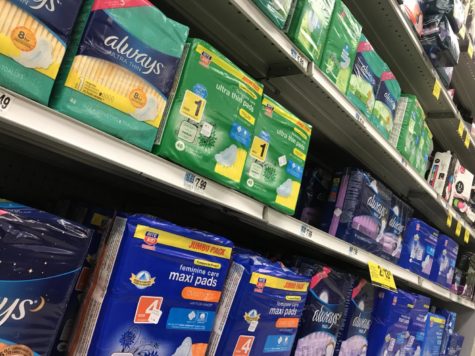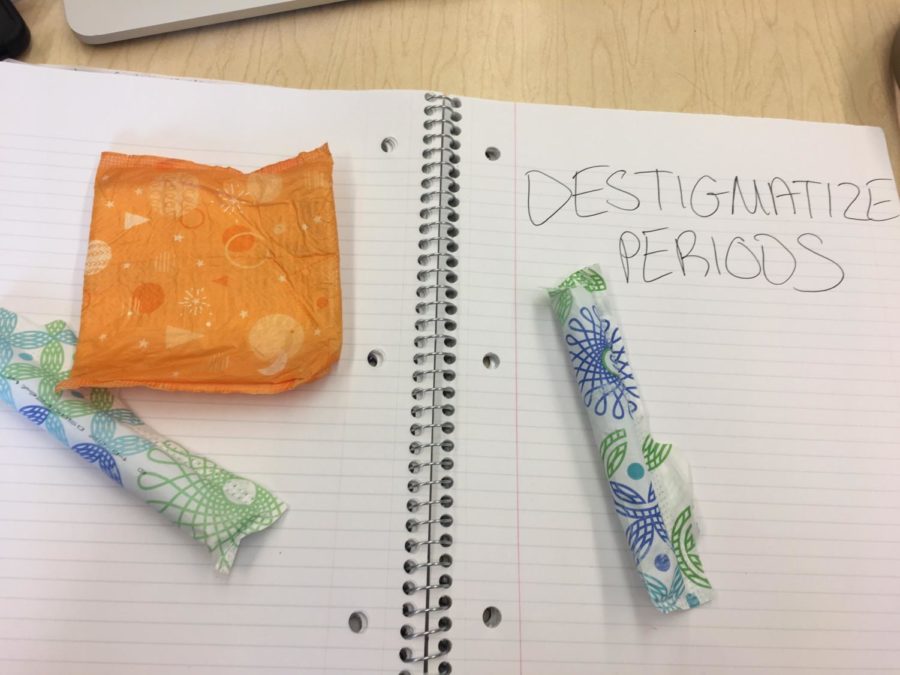Let’s destigmatize menstruation. Period.
April 9, 2018
Women spend 11,400 dollars on menstrual supplies in their lifetimes. That is enough money to buy you a years worth of groceries, cover your electric bills and health insurance for this year, as well as get you a round trip to Paris.
The average period lasts 3 to 5 days but can extend as far as 7 and end as early as 2.
Young girls of lower income families do not have the financial capability to spend money on menstrual supplies and are forced by society to skip school for this amount of time monthly when they are menstruating.
Because of the lack of proper hygiene supplies, young women across the world don’t have access to menstrual supplies and this puts them at a disadvantage to others. Many people are trying to come up with ways to help put an end to this inequity, but are struggling to figure out how to effectively do so because of the cost and stigma surrounding menstruation.
Dylan Kilgore, a 9th grader at the iSchool, explains how he has seen women’s lives affected by menstruation and what he thinks we should do about increasing awareness to the issue. He says, “The government could supply free menstrual supplies or mandate companies to lower the cost of menstrual products.” He thinks that by teaching about periods in school “men would be more knowledgeable about them and it could help destigmatize periods.”
In developing nations, around 60 percent of girls and women do not have access to menstrual supplies, missing on average five days of education or work every month. In Africa, one in every 10 girls miss school due to their period. However, in India, it is one in four.
Elizabeth Gray, an English teacher at the iSchool, spoke out on how she thinks that it would be helpful to talk about periods both in front of young boys and girls, trying to destigmatize them from a young age. Gray believes that they should be “available in schools across the world.”
Explaining her thoughts on menstrual supplies, she said they should be, “freely distributed by non governmental organizations who already have a presence at some of these countries.”
As an alternative, many girls during their periods due to a lack of supplies use rags, in replacement for proper sanitary supplies, which can later lead to infections.
Abbe Schulties, a sophomore at NYC iSchool spoke on how periods should be “normalized.” By doing this we can provide safe supplies to girls who do not have access to them.

Abbe spoke on her own experiences surrounding purchasing menstrual supplies at the drugstore. Explaining how when she goes into the store to purchase pads or tampons, she feels like “people are looking at me weird.”
On top of this, menstrual supplies are typically hidden in the back corners of stores such as CVS or Rite Aid, almost making someone feel ashamed due to the location of the supplies.
This has to do with stigma. Once we can reduce this stigma, we can increase access to menstrual supplies and initiate change.
Ms.Gray stated that “We need more people talking about periods so that more people would be aware that this is a problem and more people would work to solve it.”
So let’s begin spreading awareness so that the 26.4 million people who do not have access to menstrual products get the education they deserve and are able to support themselves clinically and educationally.
You can help out by reaching out to these following organizations or contacting me for some more options:
https://www.daysforgirls.org/ which is a nonprofit organization that is working to provide people hygienic menstrual products and work on resolving gender equity.
http://isupportthegirls.org/ which is an organization which donates personal care products for women who cannot afford them especially homeless girls and women.



